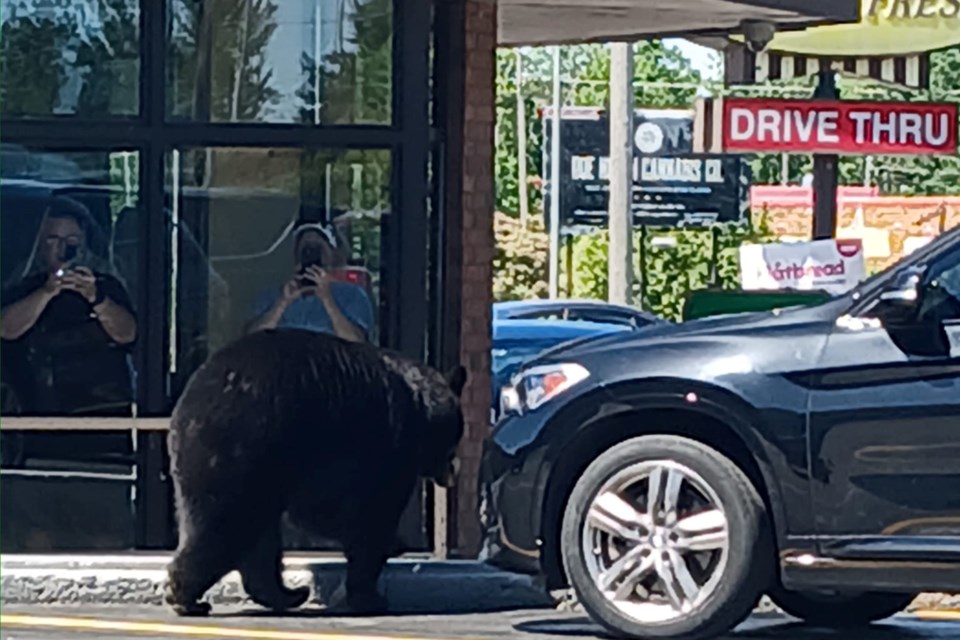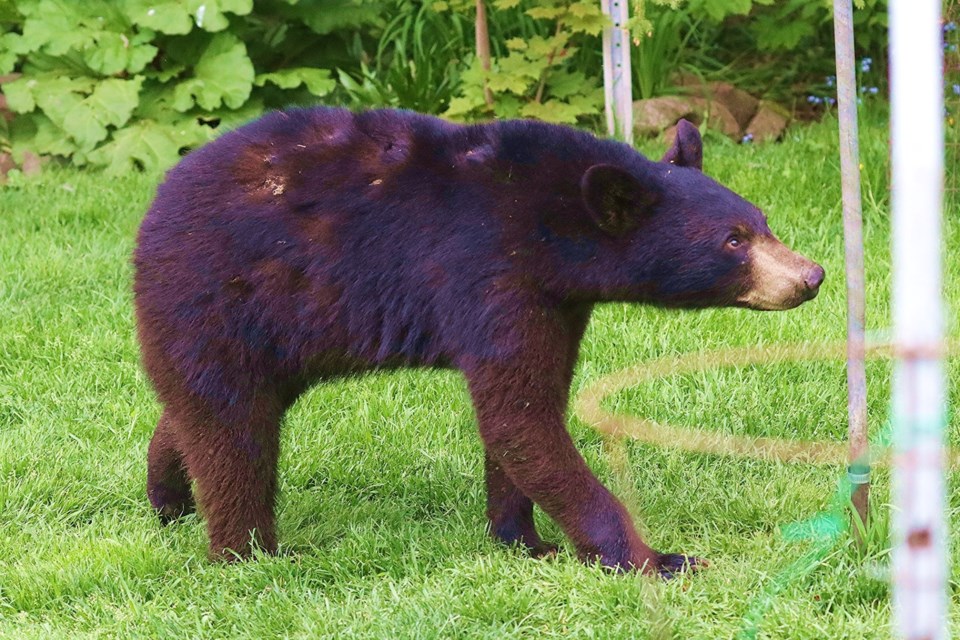No part of town seems to be left out when it comes to black bear sightings this spring.
Seemingly now more than ever, social media has been ignited by photos of the furry creatures roaming around virtually every corner of the Sault, made most evident in the Facebook group "SSM Bear Watch."
Created by Amanda Artuso in 2023, the group invites its members to stay up to date on the most recent sightings. Artuso also shares Bear Wise tips from Ontario's Ministry of Natural Resources and Forestry to keep the public informed when it comes to preventing conflict with the animals.
The group reached 7,000 members on Saturday, a milestone which coincidentally occurred on the same day as National Black Bear Day — recognized on the first Saturday of every June in North America.
In just the last three days, black bears have been spotted from the backyards of quiet east-end neighbourhoods to high-traffic areas like Trunk and Great Northern roads, while others have been photographed all the way out on Fourth Line and beyond city limits.
One was even spotted at a Tim Horton’s drive thru this week — pretty Canadian, eh?

Last Wednesday, officials at Kiwedin Public School and Holy Cross Early Learning witnessed bears enter their property, which prompted both schools to hold recess indoors and issue an email to parents.
The uptick in bear activity has blown Artuso away.
“There’s a lot more bears out there this year for sure,” she told SooToday. “The prevalence of people who have cell phones and are documenting them has made people more aware too. It’s definitely blown up.”
But why are there so many this year?
The answer isn’t definitive, but the breeding season for bears does typically begin around this time of year and lasts until the end of August.
During this time, the mother bears will chase away their 12 to 18-month-old cubs so they can begin breeding again.
“It’s those cubs you’re seeing in the trees and wandering around aimlessly,” Artuso explained. “They’re trying to establish their own territory.”
Because the last couple of summers have been drier on record, Artuso suspects the drought-like conditions have made the bears more desperate for food, prompting them to move deeper into the city as they search for resources.
“You didn’t really see them in the east-end as much previously,” she said. “When I was growing up in the west-end, you’d see them more towards the outskirts of the city. But now they’re in pretty much every neighbourhood, especially in the more populated and commercial areas.”
“There’s definitely an increase, and I don’t know if that correlates to the spring bear hunt and the changes that were made to that, but it could definitely be a factor as well,” she added.
Last year, residents were horrified when they learned a bear cub that frequented the east end with its mother and sibling had been struck by a vehicle on Lake Street.
To prevent a similar incident from happening again this year, or any conflicts for that matter, Artuso mentioned there are several tips that residents should keep in mind:
- Don’t feed the bears; take down bird feeders when possible
- Only put garbage out on garbage day
- Drive carefully and follow the posted speed limits
- Keep barbeque grills clean to avoid scent-driven visits
- Keep dogs on a leash
- Consider carrying a whistle or air horn while going for walks
“If you just remain calm and don’t provoke them, most times, they don’t want anything to do with you — they will retreat,” Artuso said. “They can be intimidating, but as long as you follow the tips, you’ll be a lot better off. Just be diligent.”
For readers who don’t use Facebook but would like to submit photos or updates of bear sightings to SSM Bear Watch, they’re invited to email Artuso at artusoamanda@gmail.com.
More information on bear safety can be found by clicking here.
